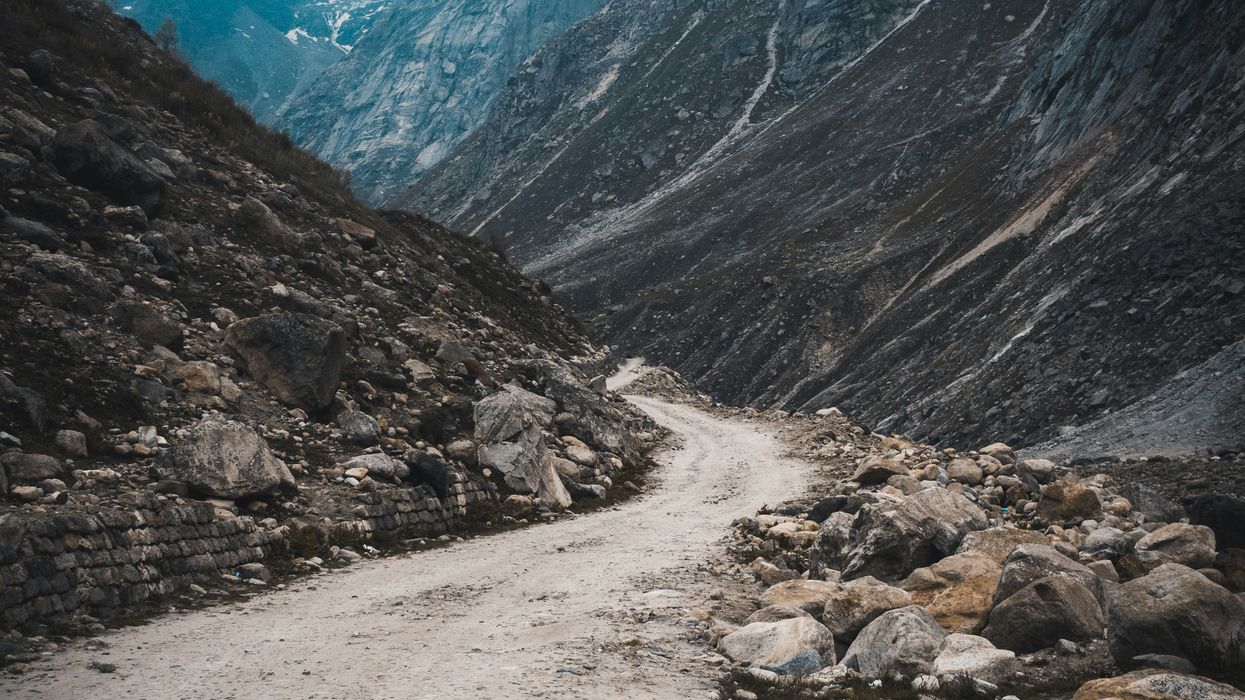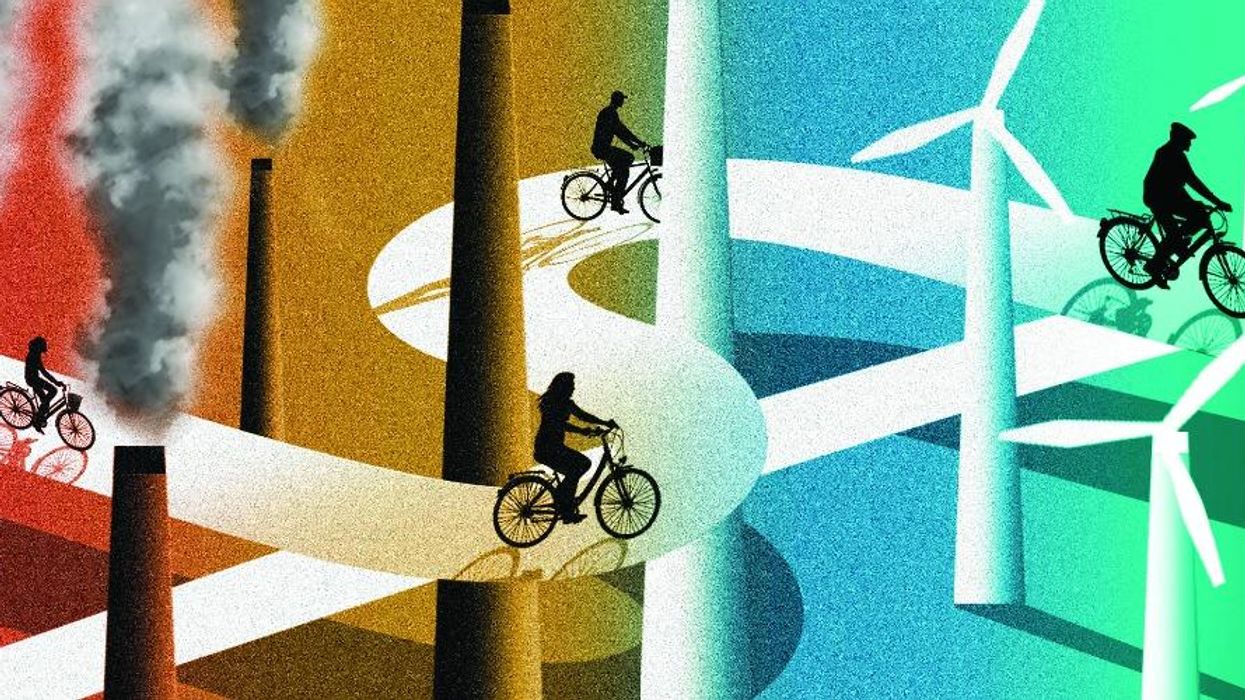A Make-or-Break Moment in Humanity's Perilous Journey
The polycrisis marks a historic inflection point in the story of civilization. Once we’re past a rapidly approaching moment, society won’t be able to maintain business as usual, even with significant reforms. The only real solution will be for humanity to inhabit the planet differently.
I’ve been watching global trends for a few decades, and have never before seen so many warning lights flash at once. That’s just one reason I’ve concluded that, as of 2024, humanity is at a make-or-break crossroads in its economic, social, and environmental history.
Let’s take a quick look at those warning lights, and see if we can grasp why so many risks are converging at once.
Things Are Deteriorating Fast
Nearly everyone knows that the climate is heating up. But a flurry of alarming recent studies about rapidly warming oceans, climate feedbacks, and tipping points suggest that the rate of warming is suddenly accelerating. Last year was the warmest on record “by far” according to NASA, with the global average temperature leaping above the next-warmest year, 2016, by an unprecedented 0.27 degree F (0.15 degree C). And it’s been revealed that the international community of climate experts, rather than fear-mongering, has actually downplayed the severity of the crisis.
Democracy globally is on life support, most notably in the U.S., but also Britain, Europe, and India.
For years the oceans have been devastated by plastics pollution, overfishing, and the expansion of “dead zones” resulting from fertilizer runoff. But oceans also absorb most of the energy from global warming. Just within the past few months, ocean heating has accelerated dramatically, with temperature records being shattered literally every day.
At the same time, armed conflicts have erupted in Europe and the Middle East. Far from showing signs of resolving themselves, these wars now threaten to intensify, drawing in more countries and combatants. Old alliances are fraying and shifting, make this one of the most perilous moments for global geopolitics in decades.
The global economy is also on a precipice. It’s always volatile, because it rests on an inherently unsteady foundation of shifting relations between natural resource extraction, energy, technology, investment, and labor. The modern economy has come to depend on perpetual growth in order to repay debt, and growth has been enabled primarily by the use of fossil fuels. Those fuels now typically require more extraction effort, due to the ongoing depletion of high-quality conventional resources. The economy has made up for the declining efficiency of its main energy sources by increasingly using debt to fund growth. Recently, total global debt, public and private, has hit a new record, both in terms of dollar amount and (for less industrialized nations) as a percentage of GDP. Meanwhile, the economy faces extraordinary headwinds, including climate impacts, energy challenges inherent in efforts to decarbonize industries, and a new tech revolution centered on artificial intelligence (AI). Technology revolutions are always transformative, but AI is potentially a wrecking ball for both industries and jobs. Tech entrepreneurs love the word “disrupt”; however, disruption on this scale and speed is treacherous.
One of the likely impacts of both AI and climate change is increasing economic Inequality. Over the past few decades, income inequality has risen in wealthy economies and rapidly industrializing economies, which together account for about two-thirds of the world’s population and 85 percent of global GDP. This increase in wealth disparity has been particularly acute in the United States, China, India, and Russia.
A typical macrosocial effect of rising inequality is the destabilization of governance institutions. In democratic societies, extreme inequality erodes trust in leadership and paves the way for takeovers by authoritarian regimes. Political polarization is also driven by conspiracy theories and lack of consensus among major news outlets about basic facts such as election results. As AI begins to ramp up the volume and sophistication of fake news, public consensus may become ever harder to achieve or maintain. Altogether, democracy globally is on life support, most notably in the U.S., but also Britain, Europe, and India. Even in already authoritarian countries like Russia and China, rulers face new challenges from persecuted ethnic minorities, popular dissent, and rival political factions.
We’re also seeing a sea change in the relatively slow-moving realm of demographics. For decades, world population has increased. The percentage rate of growth peaked in the 1970s, but the absolute number of people added per year has continued to hover at around 80 million. The number of humans alive is probably still increasing. But fertility rates are now falling rapidly nearly everywhere—not because everyone has suddenly realized that the world is overpopulated, or because most people have gotten rich (the “demographic transition”), but increasingly because young would-be parents around the world fear for the future and don’t expect to be able to afford to raise children.
Humanity has seen dramatic changes in the past century—world wars, pandemics, the introduction of new technologies, and the growth of new industries. Human population more than doubled, and the world’s geopolitical map was redrawn several times. However, the developments described above, taken together, suggest that the pace of change is about to explode; that change will, in many instances, be destructive to bedrock human institutions; and that change will increasingly elude human efforts to direct or control it. Longstanding growth trends will reverse themselves, making past experience a poor guide for adaptation to unexpected and often frightening ecological, political, and economic events.
And it’s all coming to a head now—i.e., roughly in the period from 2024 through 2030.
We’re Not the Only Ones Who See It This Way
The word “polycrisis” became a buzzword in 2023, and, during the last couple of years, a network of think tanks has sprung up to study the confluence of worrisome global trends. Post Carbon Institute is part of that network, and we’ve contributed to the literature on the polycrisis (in a long-form report and a shorter summary article, as well as other articles and podcasts).
However, we do see things a little differently from some who use the term. Many seem to think the polycrisis is just a rough patch in the inevitable evolution of larger, more powerful, and more technologically sophisticated societies. Human groups have always had problems, say these macro-optimists, but eventually challenges are overcome. In this view, the source of the polycrisis has a lot to do with increasing human connectivity: old problems (geopolitical rivalries, financial panics, and ecological issues) are rebounding on each other faster than before. Humanity just needs to find ways to speed up its responses.
I try to maintain both a systems-oriented view and a deep historical view of the world situation. From these perspectives, the growth trends of the past century are inherently unsustainable. They arose from a series of prior developments (innovations in metallurgy and finance, the introduction of fuel-burning technologies like heat engines, and European colonialism)—but especially the increasing use of fossil fuels. The early results of growth, in the forms of increased wealth and mobility, expanding food production, and rising population numbers, appeared miraculous. However, fuel-based growth is intrinsically self-limiting because of the finite size of nature’s resource base and waste sinks. Increasing consumption and population merely accelerates our overshoot of Earth’s long-term environmental carrying capacity for humans.
I try to maintain both a systems-oriented view and a deep historical view of the world situation. From these perspectives, the growth trends of the past century are inherently unsustainable.
The most important pioneering work in global systems analysis was the “Limits to Growth” computer-based system dynamics project undertaken at MIT in the early 1970s and updated several times since (most recently in 2023). The goal of the project was not to produce a forecast of future events, but to provide a set of scenarios showing likely interactions between resource depletion, pollution, industrial output, food production, and population. The actual evolution of these societal growth drivers, inputs, and outputs has generally followed the “standard run” scenario, in which growth trends continue until the early-to-middle decades of 21st century, but then reverse themselves, initiating decades of decline.
From my perspective, the polycrisis can be seen as an expected foreshock of peaks in resource availability, industrial output, population, and food production. As growth sputters, economic, ecological, and political events will present disturbing surprises on a nearly daily basis.
One of the defining characteristics of a polycrisis, by all accounts, and one of the sources of its surprises, is the increasingly chaotic interactions between system drivers and outputs. For example, as the climate heats up and triggers worsening droughts, heat waves, and storms, resulting waves of refugees will seek to move to places less affected. But rising immigration sometimes leads to more political polarization in host nations, which in turn makes consensus on climate action harder to achieve.
Another example: many efforts to reduce the severity of climate change involve building more renewable energy generation capacity while electrifying industries. The amount of new infrastructure that would be needed in order to phase out fossil fuels altogether, while providing the same energy services as today, would be vast. Building that infrastructure will take energy and raw materials, which will in turn entail mining and transport. So, ironically, efforts to solve one environmental problem (climate change) will likely worsen others (resource depletion and habitat destruction).
These sorts of complex interactions make for wicked problems—i.e., ones whose solution requires sacrificing something that society currently holds dear, or ones that generate still more problems.
The polycrisis marks a historic inflection point in the story of civilization. Once we’re past a rapidly approaching moment, society won’t be able to maintain business as usual, even with significant reforms. The economy will behave according to new rules. Solutions will backfire. And few people will understand why all of this is happening.
New Context, New Strategies
Understanding is vital if we are to avert the worst likely outcomes and lay the groundwork for sustainable societies in the future. Preventing harm requires us to anticipate coming shocks to our communities as much as we can, both so that we can protect ourselves and our loved ones, and so we can promote and model more sustainable ways of living.
Given the momentum of events, it’s easy to become fatalistic, and to conclude that nothing we do matters. But, in fact, there’s much we can do to adapt positively to the polycrisis. More than ever before, it’s important to undertake strategic efforts to save nature and culture. We can do that by identifying and pursuing “no regrets” (or “multisolving”) strategies such as restoring nature as a way to capture and store carbon.
Given the momentum of events, it’s easy to become fatalistic, and to conclude that nothing we do matters. But, in fact, there’s much we can do to adapt positively to the polycrisis.
At the core personal level, we all yearn to find meaning in what’s happening, and to make our lives a contribution to others, rather than a burden. That requires finding our place within the networks of restorative thinkers and activists around the world, and finding our unique voice.
Sometimes it means learning more about what’s going wrong, without jumping immediately to the first “solution” that presents itself. As Donna Haraway puts it, we must “stay with the trouble.” That’s often uncomfortable, and it’s why many people merely seek escape—which usually takes the form of either fatalism or techno-optimism.
Fatalism is certainly no help. It just leads to depression and irrelevance.
More people take the route of techno-optimism, but that’s typically just a path to delusion, since it rests on a mis-diagnosis of the polycrisis. Our essential human problem is not that we’ve somehow chosen the wrong (i.e., fossil-fuel based) set of technologies, while another set (that’s renewable-energy based) will fix everything. Our problem is that a momentary energy bonanza has enabled humanity to grow its population and consumption levels far beyond what’s sustainable long-term. The only real solution will be for humanity to inhabit the planet differently. That will require vision, persuasion, and time; and the adaptation process will have to proceed in the context of societal and ecological breakdown.
We’re here for the journey, like it or not, so let’s stay with the trouble, understand as much of the situation and its possible remedies as we can, and do what we can to minimize the suffering of humanity and other species now and throughout the period of polycrisis and adaptation.


